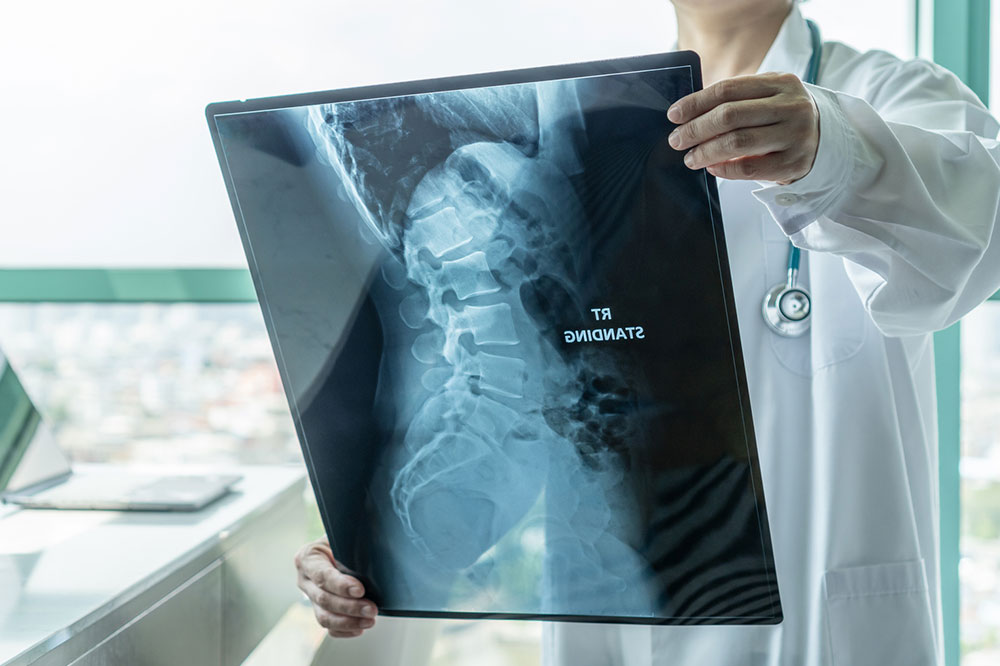In-Depth Guide to Spinal Muscular Atrophy: Types, Diagnosis, and Modern Treatments
This comprehensive article explores spinal muscular atrophy (SMA), detailing its five types, early diagnosis methods, and the latest treatment options. It emphasizes the importance of early intervention, genetic testing, and multidisciplinary management to improve patient quality of life. From severe infantile forms to adult-onset SMA, understanding the condition can help patients and clinicians make informed decisions about care and therapies. Advances in medication and supportive care are marked by promising outcomes, offering hope to those affected by this hereditary neuromuscular disorder.

In-Depth Guide to Spinal Muscular Atrophy: Types, Diagnosis, and Modern Treatments
Spinal muscular atrophy (SMA) is a hereditary neuromuscular disorder characterized by progressive muscle weakness and loss of muscle mass. This condition arises from the degeneration of motor neurons located in the spinal cord and brainstem, which are responsible for transmitting signals from the brain to muscles. The disruption in nerve signals leads to muscle atrophy, reduced mobility, and in severe cases, respiratory and swallowing difficulties. Understanding SMA's various forms, how it is diagnosed, and the available treatment options is crucial for patients, families, and healthcare providers aiming to improve quality of life and manage symptoms effectively.
Understanding SMA Classification
Medical professionals classify SMA into five main categories—types 0, I, II, III, and IV—based on the age of onset, severity of symptoms, and progression rate. This classification is essential for establishing an accurate diagnosis, developing management plans, and predicting disease progression.
Type 0 SMA — The most severe form, present before birth, is characterized by profound muscle weakness, significant respiratory issues, and low muscle tone (hypotonia). Infants with Type 0 typically show signs of fetal akinesia (reduced fetal movement), and usually, the condition is life-threatening shortly after birth due to respiratory failure. Early intervention and supportive care are vital for survival, although medical options remain limited at this stage.
Type I SMA (Werdnig-Hoffmann Disease) — This is the most common form of SMA diagnosed in newborns and infants. Symptoms often become noticeable within the first few months of life. Babies with Type I fail to achieve motor milestones such as sitting or standing unsupported. They often have difficulty supporting their heads, exhibit severe muscle weakness, and face challenges with breathing and swallowing. This form of SMA is life-threatening, with many infants requiring ventilatory support. Despite this, ongoing research has led to new treatments that can improve outcomes significantly.
Type II SMA — The intermediate form appears between 6 and 18 months of age. Children with Type II can usually sit independently but often struggle to stand or walk without assistance. Muscle weakness varies among patients, and some may experience respiratory complications as they grow older. Early diagnosis and physical therapy can improve mobility and reduce complications. Some children with Type II respond well to emerging treatments, which can slow disease progression.
Type III SMA (Kugelberg-Welander Disease) — Diagnosed during childhood or adolescence, this milder form allows individuals to stand and walk; however, they often face difficulties climbing stairs, rising from a seated position, or maintaining coordination. Tremors, abnormal gait, and muscle weakness are common. Muscle deterioration progresses slowly, allowing many to lead relatively active lives, especially with appropriate supportive therapies and assistive devices. Treatment advances focus on maintaining strength and preventing respiratory issues.
Type IV SMA — The adult-onset form, typically emerging after the age of 30, presents with mild to moderate muscle weakness, often confined to specific regions. Individuals may experience twitching, tremors, and occasional breathing difficulties. Because symptoms progress slowly, many affected adults remain functional for many years, although ongoing management and symptom monitoring are essential.
Diagnostic Procedures for SMA
Diagnosing SMA requires a comprehensive approach combining physical examinations, detailed family medical histories, and genetic testing. Physicians often perform neurological assessments to observe muscle strength, tone, and reflexes. Genetic testing is the gold standard, aiming to identify mutations in the SMN1 gene, which is most commonly associated with SMA. Additional tests include screening for NAIP gene deletions, nerve conduction studies, electromyography (EMG), which evaluates electrical activity in muscles, and sometimes muscle or nerve biopsies to rule out other neuromuscular disorders. Early diagnosis is crucial for initiating appropriate treatment plans and improving health outcomes.
Effective Management and Treatment Approaches
Managing SMA involves a multidisciplinary approach, emphasizing medications, physical and occupational therapies, mobility aids, nutritional support, and respiratory care. In recent years, significant advances in treatments have transformed the prognosis for many patients. Medications like nusinersen (Spinraza), risdiplam (Evrysdi), and onasemnogene abeparvovec (Zolgensma) target the underlying genetic causes, aiming to preserve motor neuron function and improve muscle strength. These therapies, combined with tailored physical therapy programs, help maintain flexibility, prevent contractures, and support optimal function.
Mobility devices such as motorized wheelchairs, braces, and assistive walking supports enable individuals with SMA to enhance independence and participation in daily activities. Nutritional management is vital, especially for those with swallowing difficulties, ensuring adequate caloric intake and preventing aspiration. Respiratory therapies, including chest physiotherapy, ventilatory support, and vaccinations, play an essential role in preventing respiratory infections and managing breathing issues. Early intervention and continuous monitoring of disease progression are key factors that improve quality of life for SMA patients.





